|
Location:
Fiais, Nr Carregal do Sal, Bierras. |
Grid Reference:
40.45˚ N, 7.95˚ W. |
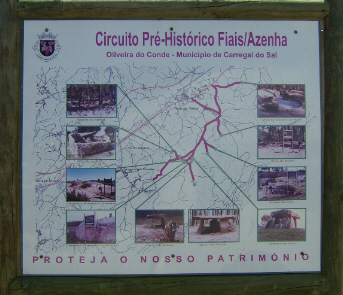
 The Orca Complex:
(Orca Complex).
The Orca Complex:
(Orca Complex).
The
elevated granite bedrock of the Fiais region near Carregal do
Sal, offered the builders of the 'Orca' dolmens both a ready source
of building material, and a 360˚ view of the country extending
several miles in all directions, whilst remaining in close proximity
to the Mondego river.
The several dolmens and passage-mounds in this area have been
preserved and combine together to form the 'Curcuito Pre-historico
Fiais', a signposted journey through the forest tracks of Fiais.
Apart from the beautiful Orca dolmen, this circuit offers examples
of rock-art (arte-rupestre), several other smaller dolmens, and
various other traces from Neolithic life, all of which add to the
feel of the site.
(Click
here for map of site)
The Orca Dolmen (Lapa da Orca) -
(Passage-mound).
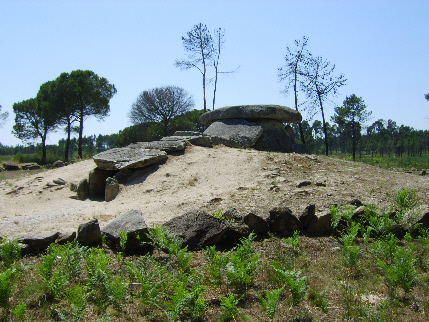 The
largest and most complete of all the Neolithic remains in area,
the Orca dolmen is a magnificent example of a Portuguese
passage-mound and has some interesting examples of prehistoric
cut-marks showing on at least two of the stones (see below). The
largest and most complete of all the Neolithic remains in area,
the Orca dolmen is a magnificent example of a Portuguese
passage-mound and has some interesting examples of prehistoric
cut-marks showing on at least two of the stones (see below).
It is possibly
because it is the dominant structure of the group that this
passage-mound has remained in such good condition.
The stone at
the end of the chamber shows signs of having been worked.
The same carving can be seen on a stone at the nearby
Orca da Palheira. The holes in
the surrounding stones suggest a door mechanism which may be a
later addition.
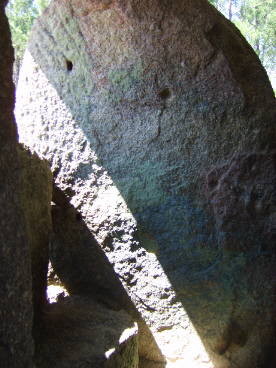
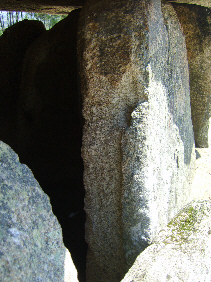
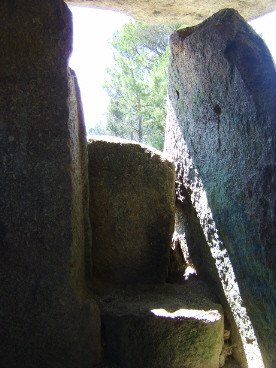
Note: From the middle photo, it looks as though
the 'door' was once forced inwards.
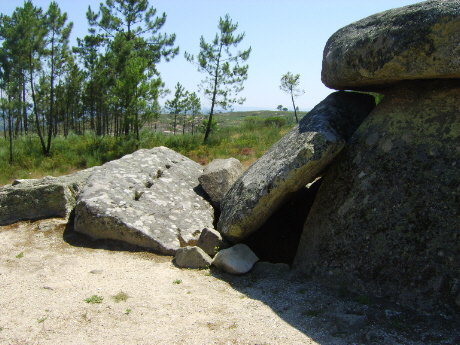
Exposure of the top of the passage-way lintels has
revealed that a couple of the stones still have their original
cut-marks in them. Other stones in the area have the same
feature. This method of cutting stone was common throughout the
prehistoric world
as the following pictures demonstrate.
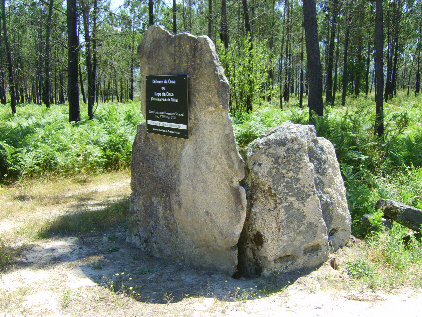
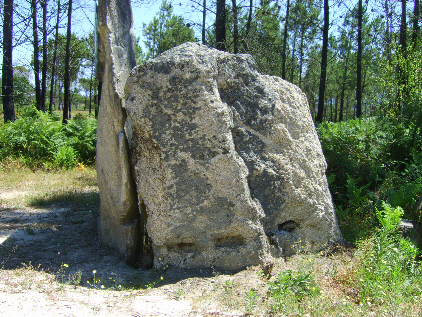
Note: this stone has been re-used recently for the entrance plaque for
Orca da Lapa.
Other examples from the same area
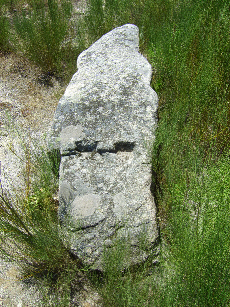
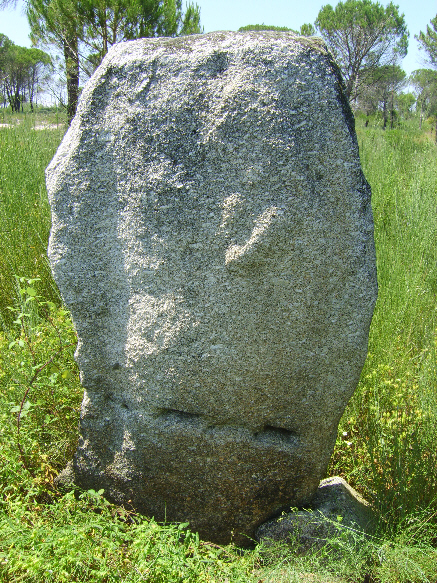
Orca da Lapa (left),
Orca do Santo (right)
|
Orca do Outeiro do Rato:
Another
passage-mound, only a lot smaller and mostly destroyed, This
structure is dated at around 3,500 BC. It is orientated towards a
nearby hill and the passageway is so small that by the look of it
one would have had to crawl along it to get in originally.
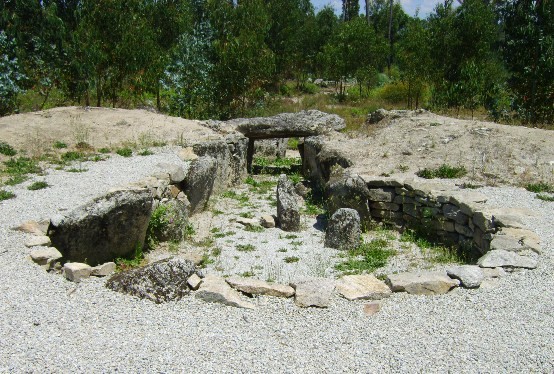
|
|
Orca do Santo:
This
completely demolished passage-mound has apparently little to
offer. It has been stripped of almost all its original
stones and small eucalyptus trees are growing aggressively
through the ground in and around the site.
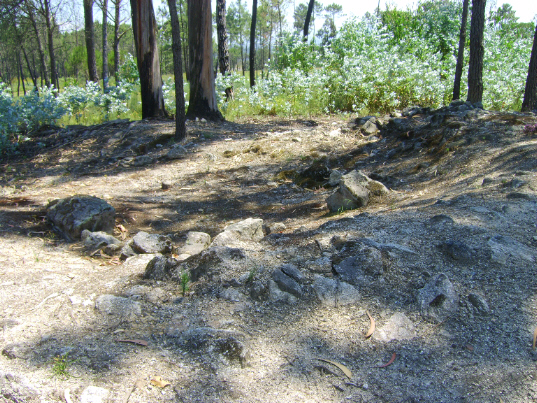
However, just
across the way, hidden in the long grass are the following
two stones. They appear aligned to each other, but not to
the mound. The stone with the cut-marks in it has been
balanced deliberately suggesting that this is a alignment of
some sort.
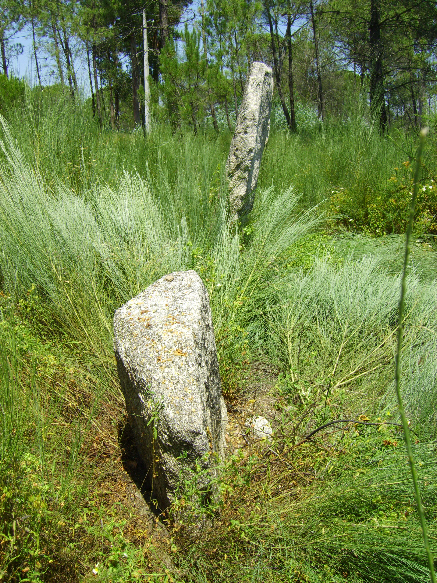

One face of
the cut-stone appears to have been 'worked' and has possible
engravings on it. |
|
The 'Quarry':
Within
sight of the Orca do Santo is this quarry face where it is
still possible to see prehistoric cut-marks in the
rocks.
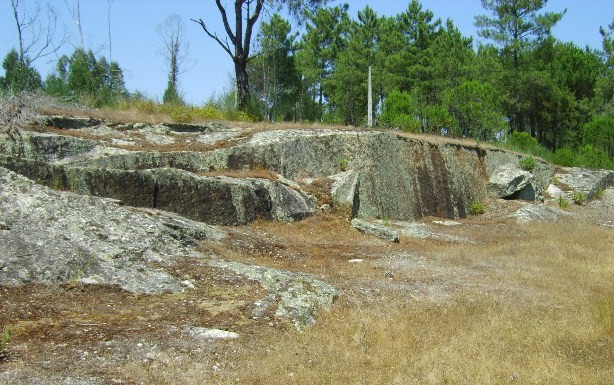
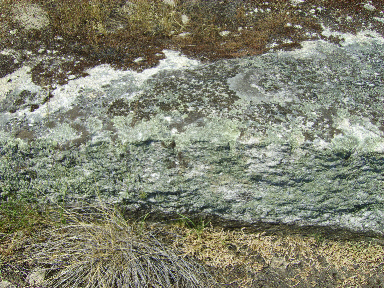
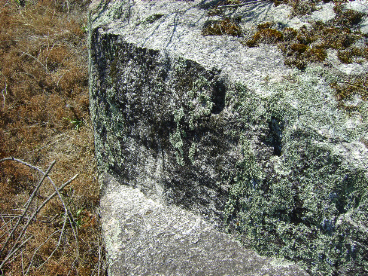
The same
quarry marks can be seen at the 'quarry' as seen on
megaliths around the complex.
(Other examples of prehistoric
quarry-marks) |
|
Orca 1 do Ameal:
This small
structure (Orca 1) dated at around 4,000 BC is peculiar in
that it has evidence of a mound surrounding it, yet it has
no passage. The opening faces away from a spectacular view.
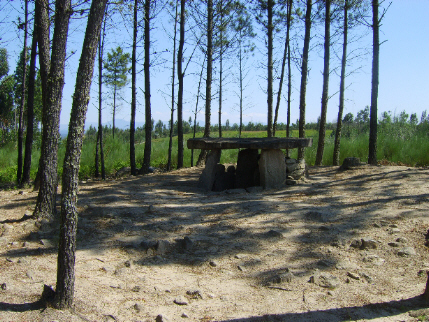
Orca 2 do Ameal:
Only a hundred
yards away is this greatly restored dolmen (also dated at
around 4,000 BC). Again showing evidence of a mound, again
facing away from the vista, and again in a different style
to other structures in the area.
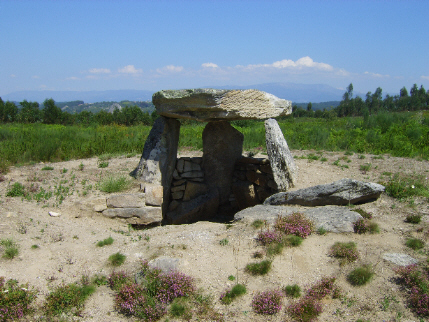
|
|
Prehistoric rock-shelter:
Not much to
look at perhaps but this tiny, paved shelter would have
provided invaluable shelter from the elements.
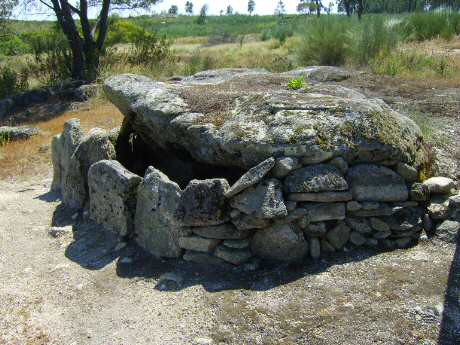
|
|
Rock carvings
(Arte Rupestre do Ameal).
This is
one of two rocks that are almost completely covered with
abstract shapes and carvings. Their meaning and age are
speculative.
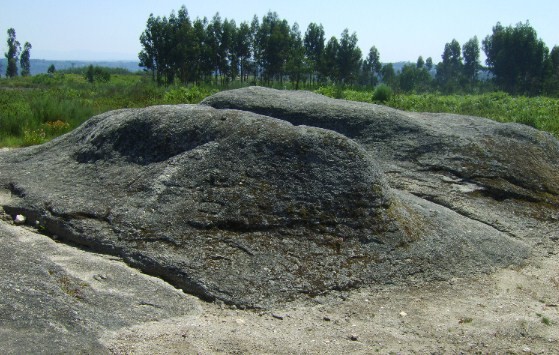
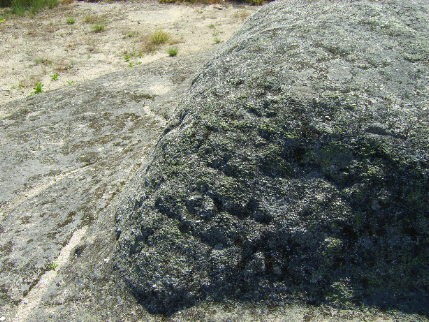
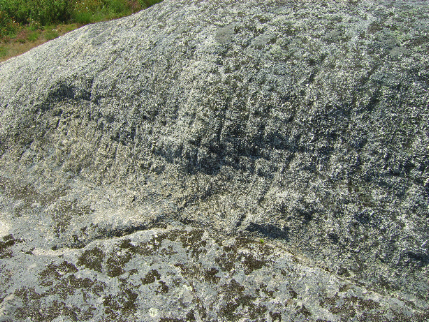
|
|
Orca da Palheira:
This
heavily 'restored' dolmen is almost invisible from
most angles having had a 60's nightmare built around it (and
with parts of it). It is dated to around 3,500 BC and
again, is completely different in design to all the other
structures in the area.
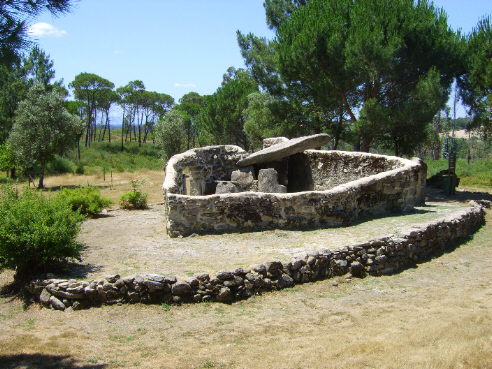
The same
rock-cut 'door' can be seen on a stone at this site too. The
stone has been re-used by the look of it... as part of a
modern door-frame (Below, left). Other stones in the
structure also appear to have been re-used from the original
dolmen (Below, right).
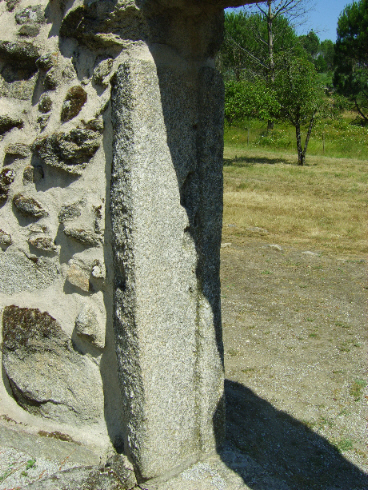
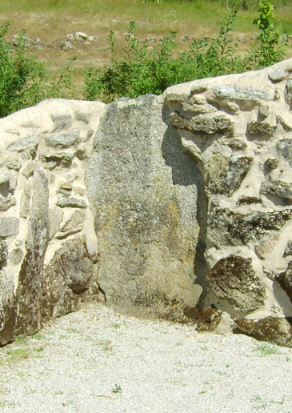
|
(List of Prehistoric Portuguese
sites)
(Portugal Homepage) |